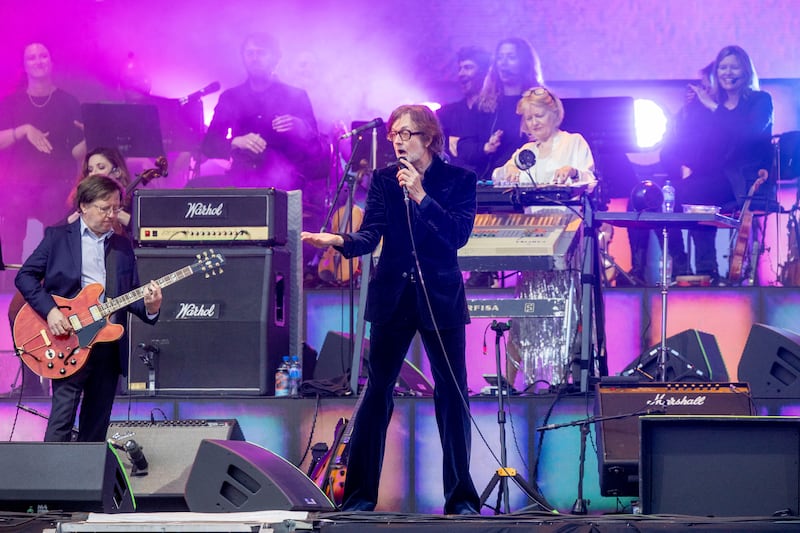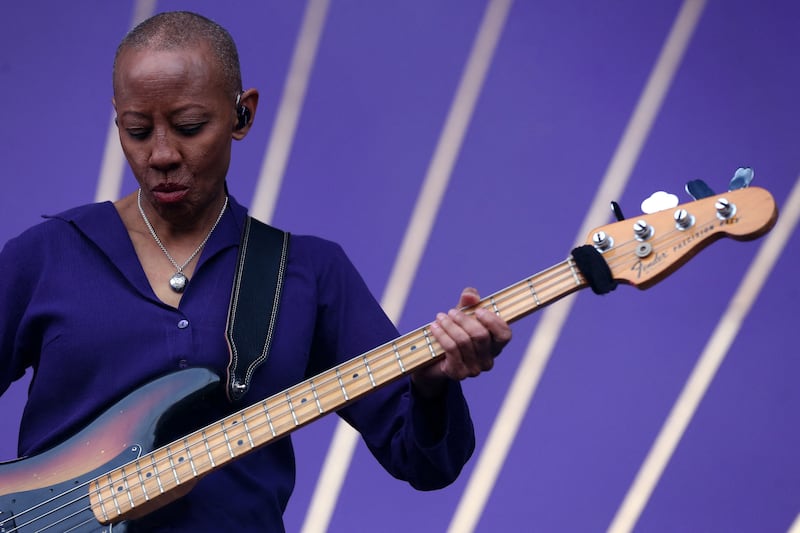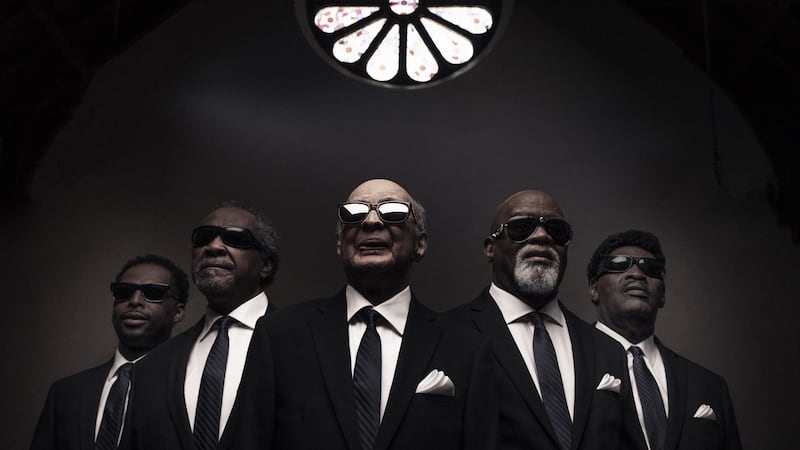What a gift for the Springsteen fan Bruce Springsteen @ 75, by Gillian G Gaar (Motorbooks, £40) is as it outlines the Boss’s career and life through 75 milestone events, performances, songs and albums. The author is an established American music writer with keen insights on her subject (who reaches the age of 75 in September), while visually the book is a treat with a generous range of concert and offstage photography.
Just when you thought that every angle, acute or obtuse, had been used for a book on or about David Bowie, along comes Me and Mr Jones, by Suzie Ronson (Faber, £20) to blindside you. Suzanne Fussey’s teenage years were spent as a hairdresser in Beckenham, London. In the early 1970s, one of her regular customers was a Mrs Jones, who popped in every week for a shampoo and set, and who also happened to be the mother of a young up-and-coming singer by the name of David Bowie.

“He was in the Top 10, you know,” Mrs Jones informs Fussey. The following week, Bowie’s mother brings along her daughter-in-law, Angie, and the die is cast: the hair stylist entered the intriguing, kaleidoscopic world of Bowie and his entourage (which included guitarist Mick Ronson, whom Fussey would soon marry), and created for the singer his Ziggy Stardust hairdo, which in the context of hair styles and fashion became an emblem of true daring. Writing about that slim but solid connection across almost 300 pages might seem like a stretch too far for the reader, but Ronson presents her story (which includes cameo appearances from people such as Lou Reed, Iggy Pop and Bob Dylan) in breezy, clear-eyed recollections. “My life was all black and white until I met David,” she writes, and you can’t help but believe her.
Belief is there, also, throughout In the Jingle Jangle Jungle, by Joel Gion (White Rabbit, £22). A member of the cult US psych/rock band, The Brian Jonestown Massacre, Gion tells the story of the first 10 years of a band whose reputation for excess in many areas has made them equally a cause for concern and a celebrated throwback to archetypal 1960s/1970s rock’n’roll hedonism. “I had nothing to get high with,” writes Gion, “but I wasn’t at all bothered by this. Recording sessions were one space where I didn’t care about doing drugs.”
At Least It Looks Good from Space by Carl Kinsella: Between comedy and calamity
The Silver Book by Olivia Laing: A timely exploration of the persistence of art under political duress
A terrific colourised history of rural Ireland; and the Limerick cleric who founded Hibs
Leon Diop: ‘The far right want to turn this into an immigrant problem, but they just don’t like black and brown people’
Lifestyle choices in the band’s early years are outlined with reflectiveness and intelligence (“I begin to wallow in the stillness of what is ultimately self-inflicted poverty”), while the days of self-indulgence are tempered with life experience (“I don’t really like coke that much. This is a key factor in why my brain still functions enough to even be writing all of this…”). The memoir draws to a close as the band tours their 1998 album, Strung Out in Heaven, and such are the insightful, acerbic details presented here, one can only hope that Gion is prepping memoir number two.
Speaking of sequels, there had better be a follow-up to You Spin Me Round: Essays on Music, edited by Adrian Duncan, Niamh Dunphy and Nathan O’Donnell (PVA, €15). For such a slim volume (fewer than 150 pages), it regularly packs a considerable punch with personal writings by established writers such as Aingeala Flannery, Wendy Erskine, Brian Dillon and Ciaran Carson, and critical theorists such as McKenzie Wark, Colin Graham and Tabitha Lasley. Most of the dozen essays here make an impact: from Erskine’s deft dissection of the video for Rod Stewart’s hit song Hot Legs to Wark’s celebration of gender liberation, the collection evaluates the crucial importance of music to the body and soul.

There is a similar sense of that in the savvy, gossipy This is Hardcore, by Jane Savidge (Bloomsbury, £8.99). Outlining Pulp’s 1998 album, This Is Hardcore (generally viewed not only as a flawed work undone by lead singer Jarvis Cocker’s increasing disillusionment with fame and celebrity but also embodying the last gasps of Britpop), Savidge starts with Cocker’s infamous disruption of a performance by Michael Jackson and ends with the singer admitting that, on balance, he would be much happier reading books.
Sandwiched in between are acute insights on how the album arrived: self-reflection that mutated into what Cocker denied was writer’s block, but rather “just mild constipation”. The album’s themes of growing older, addressing fame and the diversions of drugs and pornography pitched it as being less likable than Pulp songs such as Common People and Disco 2000, but it also displayed Cocker’s eerie kind of liberation as well as a denial of his initial material aspirations.

Ambitions also loom large in Hired Guns: Portraits of Women in Alternative Music, by Amanda Kramer & Wayne Byrne (Equinox Publishing, £25). The premise is simple but effective: stick a microphone in front of 10 female musicians, ask them questions, and allow them to talk. The results are structured like (very) long-form feature articles, which makes Hired Guns a text-heavy read, but the key to the book’s success is the breadth of musicians interviewed.
From musicians that clued-in fans would recognise to those that have laboured mostly beyond the fringes of mainstream commercial success (“their role is to bring skill, not ego”, writes Irish co-author Byrne), all have fascinating career journeys to tell. Perhaps the best known are Gail Ann Dorsey (whose work with Bowie is well documented) and Sara Lee (a member of Gang of Four, and a collaborator with, among others, Robert Fripp, B-52s and Indigo Girls).
Other names might not ring any bells for most, but touring and session musicians Clare Kenny, Susan Miller, Tracy Wormworth, Joy Askew, Lori Barbero, Caroline Dale, Angie Pollock and Sue Hadjopoulos (as well as the aforementioned Dorsey and Lee) each highlight collective strands of what can only be described as strength and energy.
You would need reserves of the same to have maintained such a stronghold on gospel music as the Blind Boys of Alabama. From the early 1940s onwards (with a necessarily changing roster of members and musicians over the decades; all six founding members are deceased), they have delivered Christian music with commitment, chanting, growling and humour.

Throughout Spirit of the Century: Our Own Story, by The Blind Boys of Alabama, with Preston Lauterbach (Hachette Books, £25), numerous living members recall the days when the group shifted from niche to mainstream recognition. Eloquently steered by US cultural historian Lauterbach, the story, which is also informed with archive material, unfolds like a history lesson. At the helm are two people: Jimmy Lee Carter, who at the age of 91 retired from singing last year (“When I step on stage, I’m not Jimmy Carter, I’m the Spirit of God”) and Clarence Fountain (“We didn’t come here looking for Jesus – we brought Him along with us”).
The longevity of the music (a product, writes Lauterbach, of “a uniquely American musical institution known as the gospel highway ... a collective Black enterprise that stretched nationwide…”) and the resilience of many people through decades of bigotry is detailed through three sections: Genesis and Revelations, Exodus, and Resurrection. Each chronologically documents the incremental successes of the vocal group, which is still out there performing and spreading the word. “The soul of America is alive and well in this music,” concludes Lauterbach. “You just have to know where to find it.”










